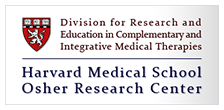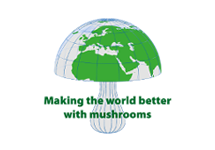Questo sito web è studiato con il solo obiettivo di fornire formazione e informazione e non sostituisce alcun consiglio, esame, diagnosi o trattamento medico. Le informazioni fornite attraverso questo sito non devono essere utilizzate per diagnosi o trattamento di alcun problema di salute o patologia. Non sostituisce gli operatori professionali della salute ed è studiato per supportare e non sostituire il vostro medico.



In the world’s largest electronic medical database maintained by the U.S. government, “MEDLINE” in 2013 there were 115 scientific articles on topic “Medicinal Mushroomsand Cancer“, 489 articles on topic “Medicinal mushrooms”. Number of scientific articles published on most popular medicinal mushrooms: Ganoderma Lucidum (Reishi) 921, Coriolus Versicolor 302, Cordyceps Sinensis 807, Agaricus Blazei 211, Lentinula Edodes (Shiitake) 502, Grifola Frondosa (Maitake) 244



Clinical Trials:
Reducing the side effects: Using Immune Assist (K9 Immunity) in Cancer treatment to reduce side effects: Cancer Clinical Trial (web page)
Immune Assist is the human grade, the same product in veterinary packaging is named K9 Immunity
Official Government Publication:
Cancer Research UK: Medicinal Mushrooms: Their therapeutic properties and current medical usage with special emphasis on cancer treatments:
by
Table of Contents (PDF 8.87 kb)
Preamble (PDF 15.5 kb)
Chapter 1 – Introduction (PDF 36.3 kb)
Chapter 2 – The Nature of Fungi with Special Emphasis on Mushrooms (PDF 1.41 Mb)
Chapter 3a – Medicinally Important Mushrooms Part 1 (PDF 8.12 Mb)
Chapter 3b – Medicinally Important Mushrooms Part 2 (PDF 8.75 Mb)
Chapter 3c – Medicinally Important Mushrooms Part 3 (PDF 8.33 Mb)
Chapter 4 – Technology of Mushroom Cultivation (PDF 338 kb)
Chapter 5 – Extraction, Development and Chemistry of Anti-Cancer Compounds from Medicinal Mushrooms (PDF 399 kb)
Chapter 6 – Immunomodulatory Activities of Mushroom GlucansPolysaccharide-Protein Complexes in Animals and Humans (PDF 216 kb)
Chapter 7 – The Role of Polysaccharides Derived from Medicinal Mushrooms in Cancer (PDF 133 kb)
Chapter 8 – Additional Medicinal Properties (PDF 84.2 kb)
Chapter 9 – Regulatory and Safety Criteria (PDF 67.8 kb)
Chapter 10 – Conclusions(PDF 49.5 kb)
Appendix 1 – Overview of Human Immune System (PDF 603 kb)
Appendix 2 – Standard Antitumor Activity Test (PDF 12.7 kb)
Appendix 3 – Medicinal Mushrooms and Cancer Prevention (PDF 17.0 kb)
Author Biographies (PDF 21.6 kb)
Executive Summary (PDF 32.7 kb)
Acknowledgment (PDF 6.89 kb)
Front Cover (JPG 69 kb)
Back Cover (JPG 26.29 kb)
Memorial Sloan–Kettering Cancer Center (MSKCC)- Founded in 1884 as the New York Cancer Hospital, Memorial Sloan–Kettering Cancer Center (MSKCC) is one of the oldest cancer centers in the country.
References:
Cordyceps Sinensis:
- Huang KC. The Pharmacology of Chinese Herbs, 2nd ed. Boca Raton: CRC Press; 1999.
- Zhu JS, Halpern GM, Jones K. The scientific rediscovery of a precious ancient Chinese herbal regime: Cordyceps sinensis, Part I. J Altern Complement Med 1998;4:289-303.
- Zhu JS, Halpern GM, Jones K. The scientific rediscovery of a precious ancient Chinese herbal regime: Cordyceps sinensis, Part II. J Altern Complement Med 1998;4:429-57.
- Xu F, et al. Amelioration of cyclosporin nephrotoxicity by Cordyceps sinensis in kidney-transplant recipients. Nephrol Dial Transplant 1995;10:142-3.
- Huang B, et al. Cordyceps sinensis and its fractions stimulate MA-10 mouse Leydig tumor cell steroidogenesis. J Androl 2001;22:831-7.
- Nakamura K, et al. Inhibitory effect of Cordyceps sinensis on spontaneous liver metastasis of Lewis lung carcinoma and B16 melanoma cells in syngeneic mice. Jpn J Pharmacol 1999;79:335-41.
- Chiu JH, et al. Cordyceps sinensis increases the expression of major histocompatibility complex class II antigens in human hepatoma cell line HA22T/VGH cells. Am J Chin Med 1998;26:59-70.
- Li, Y. et. al. Effect of Cordyceps sinensis on erythropoiesis in mouse bone marrow. Chin Med J (Engl). 1993 Apr;106(4):313-6.
- Huang YL, Leu SF, Liu BC, et al. In vivo stimulatory effect of Cordyceps sinensis mycelium and its fractions on reproductive functions in male mouse. Life Sci 2004 Jul 16;75(9):1051-62.
- Wu WC, Hsiao JR, Lian YY, et al. The apoptotic effect of cordycepin on human OEC-M1 oral cancer cell line. Cancer Chemother Pharmacol. 2007 Jun;60(1):103-11.
- Oh JY, Baek YM, Kim SW, et al. Apoptosis of human hepatocarcinoma (HepG2) and neuroblastoma (SKN-SH) cells induced by polysaccharides-peptide complexes produced by submerged mycelial culture of an entomopathogenic fungus Cordyceps sphecocephala. J Microbiol Biotechnol. 2008 Mar;18(3):512-9.
- Liu WC, Wang SC, Tsai ML, et al. Protection against radiation-induced bone marrow and intestinal injuries by Cordyceps sinensis, a Chinese herbal medicine. Radiat Res. 2006 Dec;166(6):900-7.
- Liu WC, Chuang WL, Tsai ML, et al. Cordyceps sinensis health supplement enhances recovery from taxol-induced leukopenia. Exp Biol Med (Maywood). 2008 Apr;233(4):447-55.
- Kubo E, Yoshikawa N, Kunitomo M, et al. Inhibitory effect of Cordyceps sinensis on experimental hepatic metastasis of melanoma by suppressing tumor cell invasion. Anticancer Res. 2010 Sep;30(9):3429-33.
- Lo HC, Hsu TH, Tu ST, Lin KC. Anti-hyperglycemic activity of natural and fermented Cordyceps sinensis in rats with diabetes induced by nicotinamide and streptozotocin. Am J Chin Med. 2006;34(5):819-32.
- Shi B, Wang Z, Jin H, et al. Immunoregulatory Cordyceps sinensis increases regulatory T cells to Th17 cell ratio and delays diabetes in NOD mice. Int Immunopharmacol. 2009 May;9(5):582-6.
- Ji NF, Yao LS, Li Y, et al. Polysaccharide of Cordyceps sinensis Enhances Cisplatin Cytotoxicity in Non-Small Cell Lung Cancer H157 Cell Line. Integr Cancer Ther. 2011;10(4):359-67.
- Zhang Z, Wang X, Zhang Y, Ye G. Effect of Cordyceps sinensis on Renal Function of Patients with Chronic Allograft Nephropathy. Urol Int. 2011;86(3):298-301.
